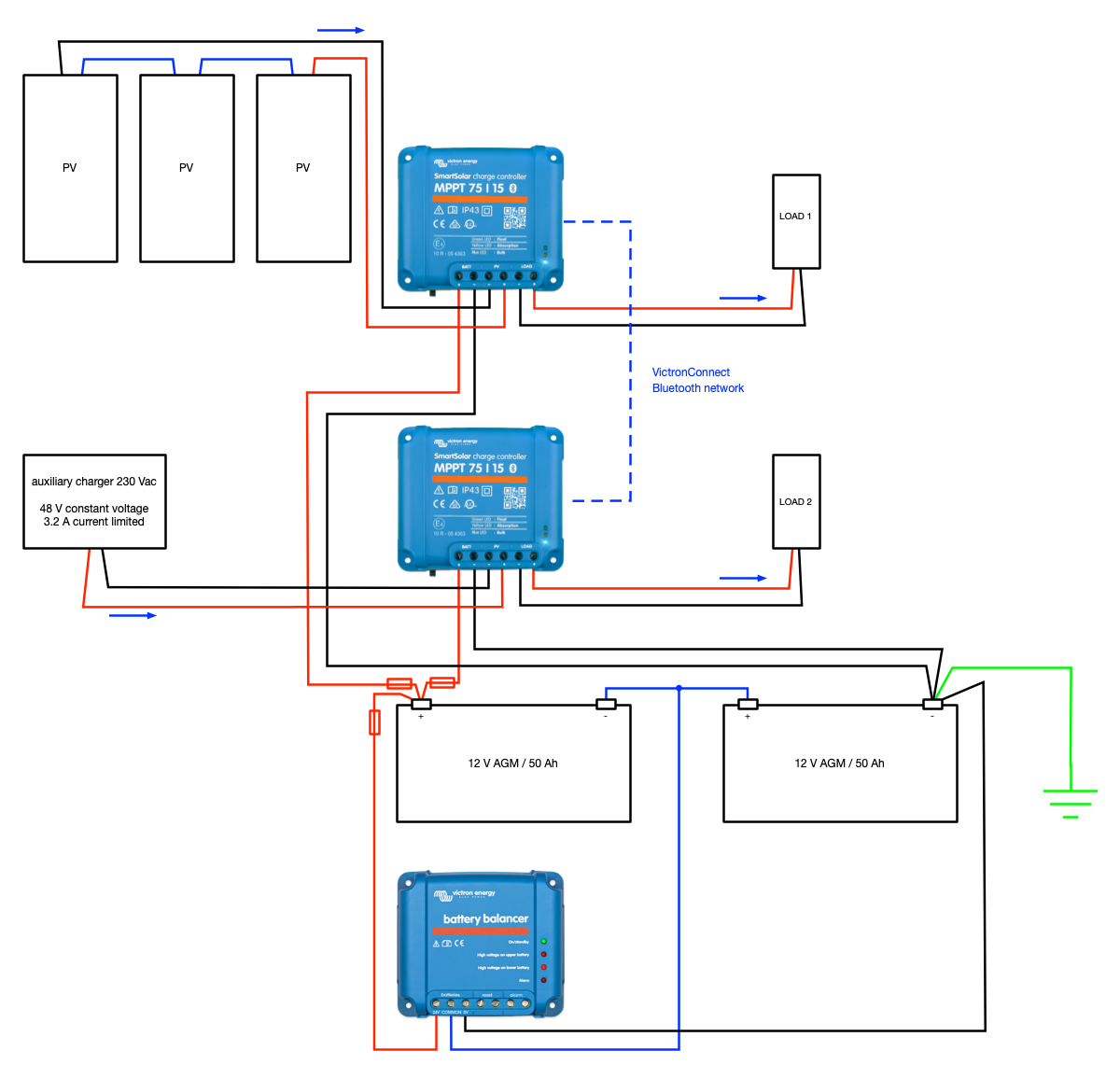Hi, I have searched the forum but was not able to find a clear answer yet.
I am looking to create a stationary solar setup on the African continent using a string of solar panels and a Victron SmartSolar MPPT to run some 24 Vcd equipment and charge an AGM battery bank. To assist the solar charger I had a look at the Blue Smart IP65 series to top up the batteries on days when sunlight is not bringing enough energy. 230 Vac is available on-site but there are regular power outages due to load-shedding, this is why I like the solar installation to be the primary system that delivers power. The total continuous power the system needs to produce is around 150 Watt or 3.6 kWh per 24 h.
For a proper setup I might need the following:
- A SmartSolar MPPT
- A charger like the Blue Smart IP65 or comparable
- A SmartShunt
- A Smart Battery Sense
Solar panels and batteries will be sourced locally.
Now is the question, can I put these four devices in a BlueTooth network using VictronConnect and have them work together? The important thing is that the batteries don't get overcharged, I would like to stick to the recommended 0.1 C, putting two chargers in parallel without monitoring the total current is not an option for me. Is there maybe one product that can do all of this in one single device?
I won't be needing a 230 Vac inverter because all equipment capable of using 24 Volt. Any insights are welcome, thank you in advance.

